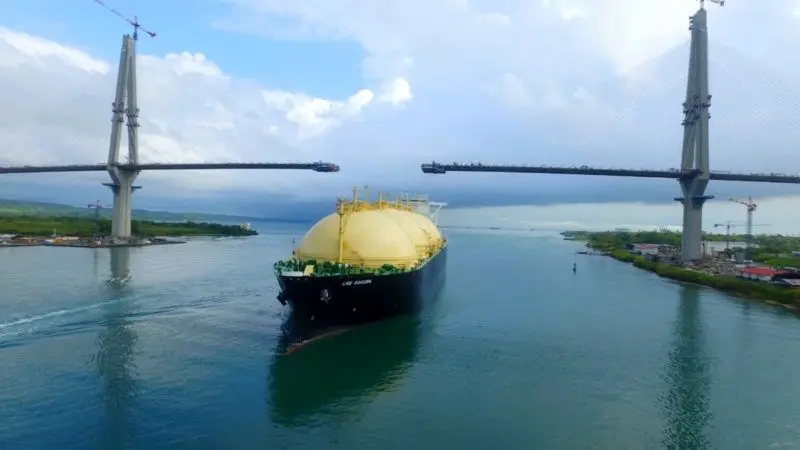Panama Canal Opens Way for More LNG Transits With U.S. Exports Rising
The Panama Canal Authority will ramp up the movement of massive liquefied natural gas tankers through the waterway starting in October, as U.S. exports of the fuel are set to expand.

The Panama Canal Authority will ramp up the movement of massive liquefied natural gas tankers through the waterway starting in October, as U.S. exports of the fuel are set to expand.
Under the new rules, the ships can traverse the canal at night, and two at a time can be on Gatun Lake, the man-made waterway at the canal’s north end. The changes will let two tankers move through the canal in different directions at the same time, officials said. The authority will also better identify “ghost bookings” by companies that reserve slots in advance, then fail to show.
The ability to handle the huge tankers that carry LNG is closely watched in the U.S., where two operating export terminals are set to be joined by four more through 2020. Using the canal greatly cuts the time to ship to Asia, where China is now the world’s largest natural gas importer.
“Our plan is to be ahead of the demand,” said Deputy Administrator Manuel Benitez, who outlined the changes in an interview in Washington at the World Gas Conference.
On Tuesday, the authority celebrated the two-year anniversary of an expansion that opened the canal to larger tankers. Since then, 372 LNG tankers have gone through the locks, with 337 moving through on the same day they had reserved a slot. The remaining ships were tankers that showed up with no reservation, and all but five moved through on the same day. The rest waited three to four days at most.
Now the waterway is averaging less than a trip a day for these tankers. In October, LNG traders will be able to compete with other shippers for a second daily slot. The canal has a total of 10 slots available for reservations, and has sent as many as 11 ships through. Benitez says their analysis shows the new locks may handle as many as 13 a day.
In fiscal year 2019, the Panama Canal Authority expects 60 million metric ton of LNG to pass through the waterway — with 41 million ton of that coming from the U.S. It expects to be able to offer three bookings a day for LNG carriers in 2022.
The restrictions on LNG traffic in the canal were self-imposd as a safety precaution as the authority was learning to understand the risks of handling a new type of vessel in newly-built locks, Benitez said.
Now, LNG tankers pay $500,000 to $525,000 to use the canal. But the authority is seeing an increasing number of bigger container ships that pay more than $1 million, Benitez said. An advantage of the changed rules is that they allow more ships in the “million dollar club” to move quickly through the canal, letting shippers boost the volumes they carry without taking up added slots, he said.















![AIRBUS A380 [MORE THAN 600 PASSENGER’S CAPACITY PLANE]](https://cdn.tinn.ir/thumbnail/4jCp4EQvCU0b/IjHVrSYQrIAqIzXuTzADR7qLYX4idQT4nfq__26E5SCUPLMqfhWkWajvuO9Wfq1ql1TjV4dhkrHliNQU82kMpo2NNftT_NGEwHc9KXtN_rk731bmifa2IQ,,/airbus-a380-structure1.jpg)

Send Comment